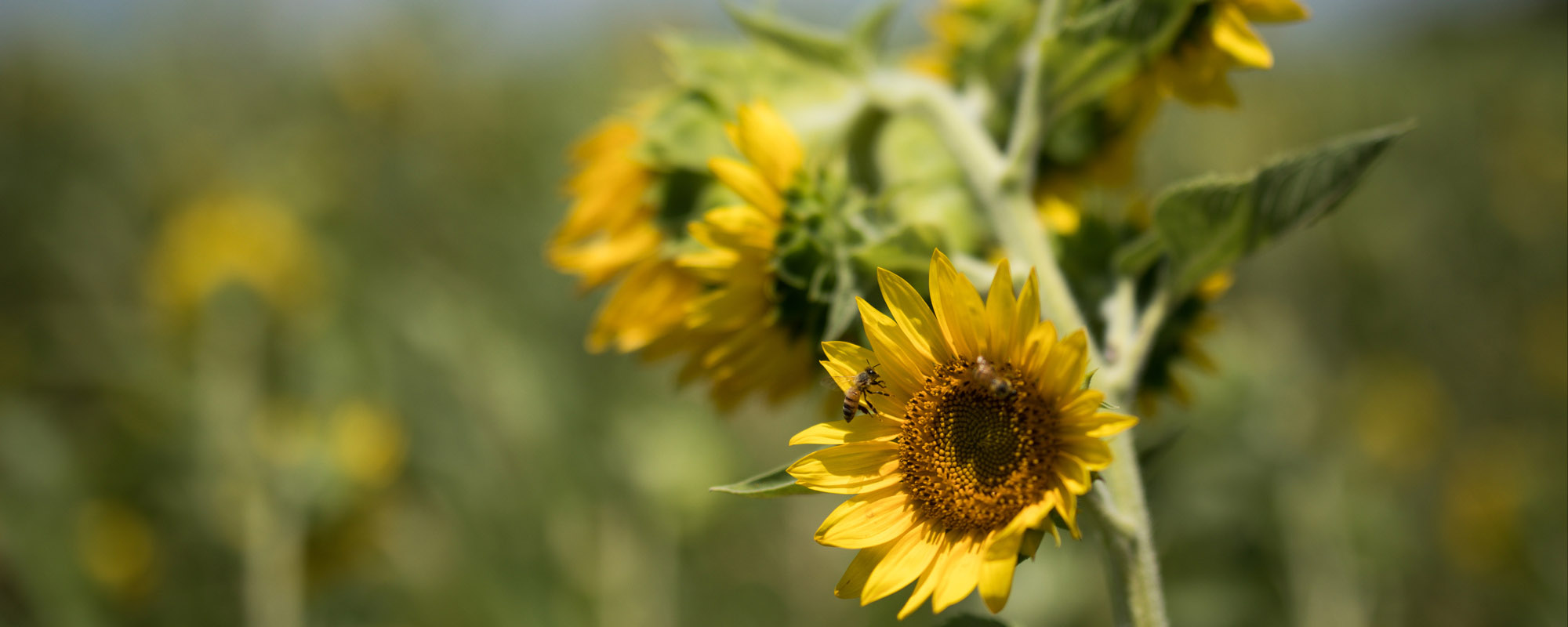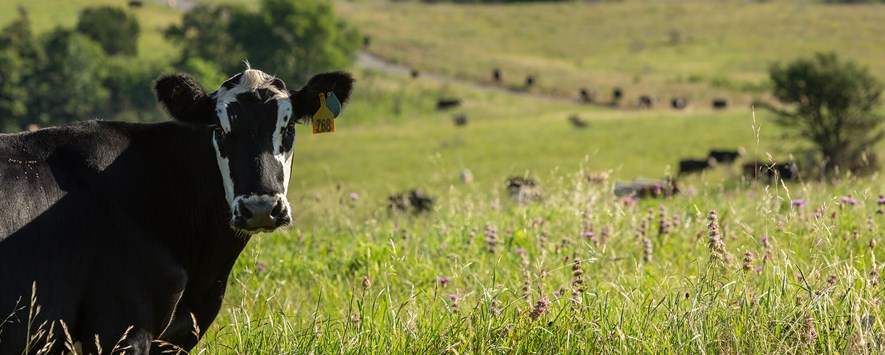Cover crops span a diverse array of plant types and species, and they can be used at various times of the year in the Southern Great Plains. For the sake of simplicity, we will group them by warm-season and cool-season. Typically, cool-season cover crops are planted in the fall on crop fields or overseeded into dormant warm-season perennial grass pastures. Warm-season cover crops are usually planted in the spring on crop fields. In Oklahoma and Texas, they can also be planted in late summer for fall growth prior to a killing frost. We have experimented with growing cover crops in various environments in the Ardmore, Oklahoma, area over the past several years. Following are some of our observations.
Cool-Season Crops
Barley
Barley is better suited to salty or high pH soils. It is similar in other traits to other small grains.
Brassicas
Brassicas, such as collards, mustards, radishes, rape, turnips and various hybrids of these, are sometimes problematic if used as cover crops. If conditions are favorable, their growth can be overwhelming. However, they can also be disappointing due to poor germination and stand establishment, or from freezing out before meeting desired production goals. While it is best to try all cover crops on a limited area to begin with, this is especially good advice with brassicas.
Crimson Clover
This is one of the first clovers or legumes to mature in the spring. It is adapted to a wide range of soils and may be one of the more acid-tolerant clovers. Crimson is one of the larger-seeded clovers and can reseed itself if given the opportunity. It can provide nitrogen (N) fixation but will not be as productive as vetch or peas.
 Rye
Rye
Oats
In addition to fall planting, oats can be planted in late winter. Certain cultivars are even showing promise for use in the warm season. Oats are better suited to heavier or wetter soils. They are reported to be one of the better species for forming associations with mycorrhizal fungi. Occasionally, the seed does not flow through the tubes from the drill seed box to the row opener unit because of light seed weight. Oats can be winter tender; some varieties may freeze out.
Rye
Rye is better suited to sandy soil. It is a little more tolerant of low pH levels and low fertility than other small grains, and it grows at temperatures 5 degrees Fahrenheit cooler than other small grains. It will be the earliest of the small grains to mature and can be broadcast seeded successfully. Rye is popular for its allelopathic effect against marestail (Conyza canadensis). Rye may be considered a weed in future small grains crops.
Triticale
Triticale is an interspecific cross of wheat and rye. Due to this hybrid vigor, it can have high biomass production. Triticale shares a lot of the qualities of wheat and rye. Awned and awnless varieties are available.
Vetch
Most vetch used in cover crops is hairy vetch, but there is also common vetch that may fit in certain circumstances. Vetch is better suited to sandy soil. Being a legume, vetch can provide significant N fixation. One of the most notable differences between vetch cultivars is maturity date. The flowers draw many different species of pollinators in the spring. Vetch can be broadcast seeded and will reseed itself if given the opportunity.
Wheat
The market offers cultivars of wheat that are widely adapted to a broad range of soils. In addition to awned and awnless varieties, there are also soft and hard wheats to choose from.
Winter Pea
Winter pea is better suited to medium and heavy textured soils. There are high-tannin and low-tannin varieties. Grasshoppers tend to avoid high-tannin varieties. There are also spring peas that may fit in certain circumstances. Peas are also legumes and fix N.
 Flax and sunn hemp grow as cover crop plots in the foreground. Behind those are mixtures of cover crops at the Noble Research Institute.
Flax and sunn hemp grow as cover crop plots in the foreground. Behind those are mixtures of cover crops at the Noble Research Institute.
Warm-Season Crops
Brassicas
Brassicas, such as collards, mustards, radish and various hybrid turnips, are typically thought of as cool-season plants, but many of them also do well as warm-season plants. Some are short-season and flower in as little as a month, and others take much longer to flower. They do attract pollinators and beneficial insects but can also attract pest insects. Some are excellent nutrient scavengers with taproots that can break up compacted soil layers.
Browntop Millet and Foxtail Millet
Both millet varieties are similar and can provide good cover but may not get very tall. They are better adapted to loamy soils, but they tolerate a variety of soils and respond well to increased soil fertility and management. They are relatively short-season crops.
Buckwheat
While buckwheat the crop and wild buckwheat the weed are in the same family, they are different genera and species; therefore, they are not the same. Buckwheat is a short-season crop that begins flowering soon after emergence, and the flowers attract many pollinators. It seems adapted to a wide range of soil types.
Cowpeas
Cowpeas are heat-and drought-tolerant, and, as legumes, they can fix N. Cowpeas are adapted to a wide range of soil types and seem to be relatively pest-free.
Flax
While flax does not grow much biomass or make a large plant, it does seem adapted to a wide range of environments and is tolerant of temperatures slightly below freezing.
Guar
Guar is slow to germinate and establish a stand but is hardy and heat- and drought-tolerant once it gets established. It is a legume and is better adapted to salty soils than other legumes.
 Mungbean
Mungbean
Mungbeans
Mungbeans are a short-season legume. They can mature in less than 60 days; therefore, they do not get very tall. They are heat- and drought-tolerant.
Okra
Believe it or not, okra is an excellent summer cover crop. It is tolerant of drought, thrives in hot weather and is adapted to a range of soil types. It makes a large plant and an impressive taproot that can break up compacted soil layers.
Pearl Millet
Pearl millet is better adapted to sandier soils and tends to perform poorly on heavy soil. Pearl millet is often a good choice when a tall grass other than a sorghum species is desired.
Sorghum Species
This group of plants actually includes forage and grain sorghum, sorghum-sudan hybrids, and sudan grasses. There is a range of plant maturities and heights to choose from. There are also brown midrib and photoperiod-sensitive traits to consider. Sorghum species are drought- and heat-tolerant, and they are excellent nutrient scavengers. They have the potential to produce larger quantities of biomass than any other cover crop. Since some of these can get very tall, there can be challenges associated with terminating them with herbicides.
Soybeans
Varieties with the glyphosate resistance trait offer the opportunity to use glyphosate, in season, for weed control. Late maturity group soybeans are generally preferred for cover crops to stay vegetative as long as possible. Unfortunately, soybeans seem more prone to attack by insect pests and are not as drought-tolerant as other warm-season legumes.
Sunflowers
Typically, black oil sunflowers are used for cover crops. Sunflowers are good scavengers for water, and their taproots can break compacted soil layers. The flowers attract many pollinators but may also attract pest insects such as grasshoppers.
Sunn Hemp
Sunn hemp is actually a Crotalaria and not related to hemp. It is a tropical legume and may or may not make viable seed, depending on weather and growing days. Unlike other legumes, the stalk/residue is quite durable. Sunn hemp has a tall, slender growth habit and can reach 10 feet tall. It is heat- and drought-tolerant, adapted to a range of soil types, and seems to be relatively pest-free.




